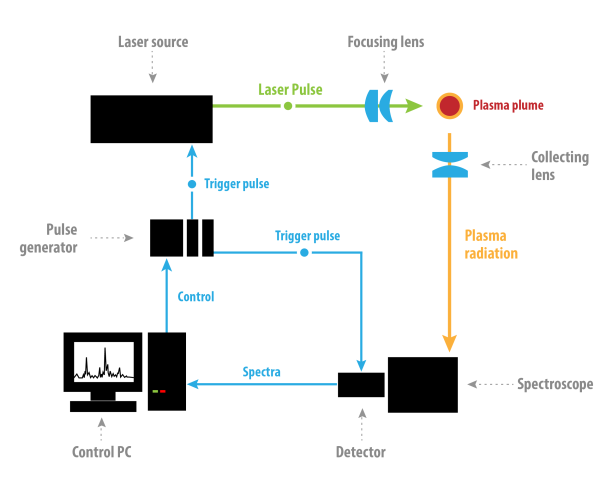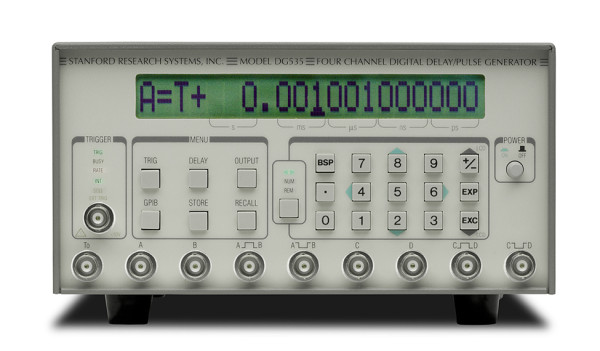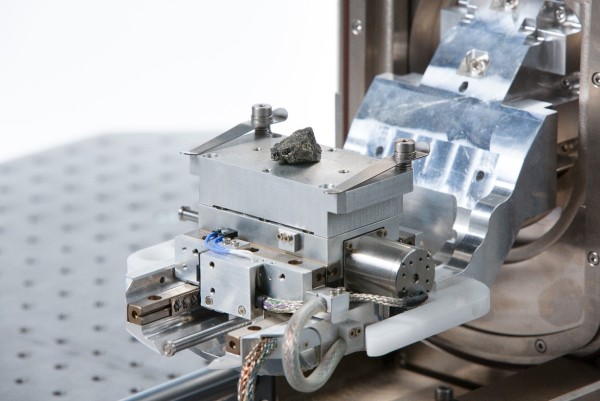5 STEPS TO BUILD A HIGH-PERFORMANCE SCIENTIFIC LIBS SETUP
Brief introduction to the world of LIBS systemsCalibration sources
Advanced spectrometers with non-integrated detectors, with capability of interchangeable gratings and variable input slit diameter requires for a precise adjustment a calibration lamps with defined emission characteristics. Mercury-Argon line source helps to properly calibrate the x-axis of the captured spectra (wavelength), while the deuterium-halogen lamp with continual emission spectrum helps to calibrate the intensity profile of the captured spectra.Digital delay generator
In order to enhance SNR (Signal to Noise Ratio) or SNB (Signal to Background Ratio) of the detected emission lines, or in order to perform the time-resolved spectroscopy, the exposition time of the detector shall be properly synchronized with the laser pulse. In respect to rapidness of the ongoing phenomena it is crucial to control the whole system with very precise time resolution. Such a synchronization is ensured by so called digital delay generator (DDG). In the simplest scenario DDG waits for a control pulse from the laser and after a delay (set to hundreds of ns to units of us) it sends a control signal to the ICCD camera, so that it starts recording the spectra. Modern ICCD detector have DDG integrated. The control signal from the other channels of the DDG can be used to trigger many other devices that can be a part of an advanced LIBS setup. For utilizing more lasers (Double-Pulse LIBS) the multichannel DDG is absolutely a must. Number of outputs, time resolution and capability to handle some special synchronization requirements are among the basic parameters of a DDG.
The control signal from the other channels of the DDG can be used to trigger many other devices that can be a part of an advanced LIBS setup. For utilizing more lasers (Double-Pulse LIBS) the multichannel DDG is absolutely a must. Number of outputs, time resolution and capability to handle some special synchronization requirements are among the basic parameters of a DDG.
 Digital delay generator (Standford Research System website, 2016)
Digital delay generator (Standford Research System website, 2016)
Sample manipulator
The subject of LIBS analysis is a given sample of a certain shape and dimensions so the way of its mounting usually needs to be considered. A manually adjustable stage can be used as the simplest solution. For any more complex analysis, however, it is necessary to employ a 3-axis electrically controlled manipulator with number of adapters for samples. The manipulator not only makes the analyses easier, but properly configured it also enables utilization of automated depth profiling, 2D or even 3D mapping or laser beam autofocus. The most suitable manipulator has to be chosen from a wide range of available types. They generally differ in the range of axes travel, weight capacity, step size, precision, repeatability and, of course, by cost. An important aspect may be whether it is required that the manipulator has an aperture in its center for the laser beam entry from below. Motorized sample manipulator by Atomtrace
Motorized sample manipulator by Atomtrace
Contacts
Contact Us
Take the first step to easier and speedier chemical analysis. Reach out to us and we will be in touch soon!
AtomTrace a.s.
Vědecko-technický park profesora Lista
Kolejní 9, Brno 612 00
Czech Republic
Identification number: 03396916
VAT: CZ03396916
E-mail: info@atomtrace.com
GDPR
Company AtomTrace a.s. is processing personal data. Information on the processing of personal data is available here.
Sales
Are you interested in our products?
Contact our sales team: sales@atomtrace.com
Support
Or contact our support team: support@atomtrace.com

 Handcrafted with love by STUDIO SYNAPSE
Handcrafted with love by STUDIO SYNAPSE